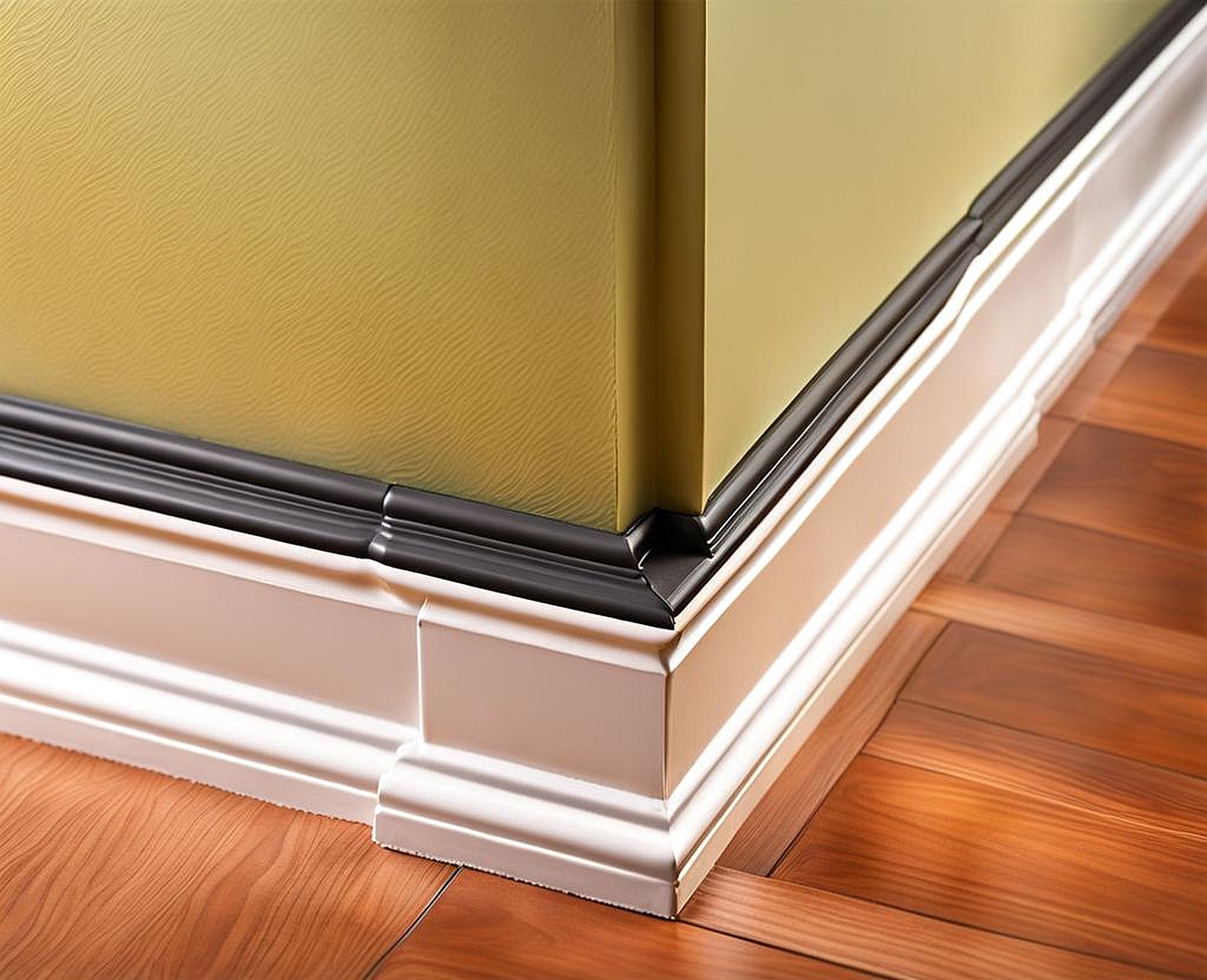Discovering mold lurking behind your baseboards can be an unsettling experience, but fear not – with the right approach, you can successfully treat this pesky problem and reclaim a healthy living environment.
Identifying Mold Behind Baseboards: Signs and Causes
The first step in addressing mold growth behind baseboards is to recognize the telltale signs. Keep an eye out for discoloration, musty odors, or visible mold growth along the edges of your baseboards. Don’t ignore those warning signals – mold can quickly spread and exacerbate respiratory issues or allergies if left unchecked.
Mold thrives in damp environments, so leaks, condensation, or high humidity levels could be contributing factors. For instance, I once encountered a stubborn case of mold behind the baseboards in my bathroom. It turned out that a slow leak from the shower had been gradually seeping moisture into the surrounding area, creating the perfect breeding ground for those pesky spores.
Preparing for Mold Remediation: Essential Safety Precautions
Before diving into the removal process, it’s crucial to prioritize your safety. Mold exposure can potentially trigger allergic reactions, respiratory issues, or other health concerns, especially for those with compromised immune systems or pre-existing conditions like asthma. Don’t take any chances – protect yourself by donning appropriate personal protective equipment (PPE), such as an N-95 respirator mask, goggles, gloves, and protective clothing.
Next, create a containment area to prevent the spread of mold spores. Use plastic sheeting to seal off the affected area, and consider running a HEPA air purifier to capture airborne spores. These precautions may seem excessive, but trust me, you don’t want to risk cross-contamination. I learned this the hard way when I tackled a mold issue without proper containment, only to discover new growth popping up in other areas of my home weeks later.

Effective Mold Removal Methods for Baseboards
Now it’s time to roll up your sleeves and tackle the mold head-on. The first step is to remove the baseboards carefully, taking care not to disturb the mold excessively and release more spores into the air. Once removed, you can use a combination of cleaning solutions and specialized tools to eliminate the mold growth effectively.
For small, isolated areas, a bleach solution or commercial mold remover can work wonders. Larger infestations may require more heavy-duty tactics, such as sanding or wire brushing to remove stubborn mold growth. Remember to work in a well-ventilated area and dispose of any contaminated materials properly. Don’t underestimate the persistence of mold – I once thought I had thoroughly cleaned an area, only to discover a resurgence of growth a few weeks later.
If you’re dealing with porous or semi-porous materials like drywall or wood, you may need to replace them entirely if the mold has penetrated too deeply. While it’s an added expense, it’s better to start fresh than risk ongoing issues down the line.
Post-Treatment Measures: Preventing Future Mold Growth
Congratulations! You’ve successfully removed the mold, but your work isn’t done yet. To prevent a recurrence, you’ll need to address the underlying moisture issue that facilitated the growth in the first place. This could involve repairing leaks, improving ventilation, or investing in a dehumidifier to maintain optimal humidity levels.
Once you’ve resolved the moisture problem, it’s time to reinstall the baseboards. Consider using mold-resistant products or applying a protective sealant to create an inhospitable environment for future mold growth. Regular monitoring and maintenance will also be key to catching any potential issues early on.
I can’t stress enough the importance of addressing the root cause of moisture. I once thought I had eliminated a mold problem by simply scrubbing the affected area, only to have it resurface a few months later because I hadn’t fixed the leaky pipe that was causing the issue in the first place.
When to Call in Professional Mold Remediation Services
While many mold issues can be addressed with diligent effort and the right tools, some situations may warrant professional assistance. If the mold growth covers an extensive area (greater than 10 square feet), or if you suspect contamination within the walls or HVAC system, it’s best to enlist the help of certified mold remediation specialists.
Professionals have access to advanced equipment and techniques to ensure thorough mold removal and prevent cross-contamination. They can also provide expert guidance on addressing underlying moisture issues and implementing preventative measures for long-term protection.
I learned this lesson the hard way when I attempted to tackle a widespread mold problem in my basement on my own. Despite my best efforts, the mold kept resurfacing, and I eventually had to call in the professionals. They not only remediated the mold effectively but also identified and repaired a hidden leak that had been fueling the growth.
Once you’ve successfully tackled the mold behind your baseboards, it’s time to shift your focus to proactive measures to maintain a mold-free home. Regular inspections and prompt moisture control are key. Be vigilant for any signs of leaks, condensation, or excess humidity, and address them promptly before they can escalate into a full-blown mold situation.
Additionally, consider investing in a dehumidifier or upgrading your ventilation system to regulate indoor humidity levels effectively. Routine cleaning and decluttering can also help eliminate potential mold food sources and improve air circulation. By adopting these proactive strategies, you’ll create an inhospitable environment for mold growth, ensuring a healthier, more comfortable living space for years to come.
Remember, maintaining a mold-free home is an ongoing process, not a one-time fix. Stay diligent, address moisture issues promptly, and don’t hesitate to seek professional help if needed. With the right approach, you can keep those pesky mold spores at bay and enjoy a healthy, worry-free living environment.